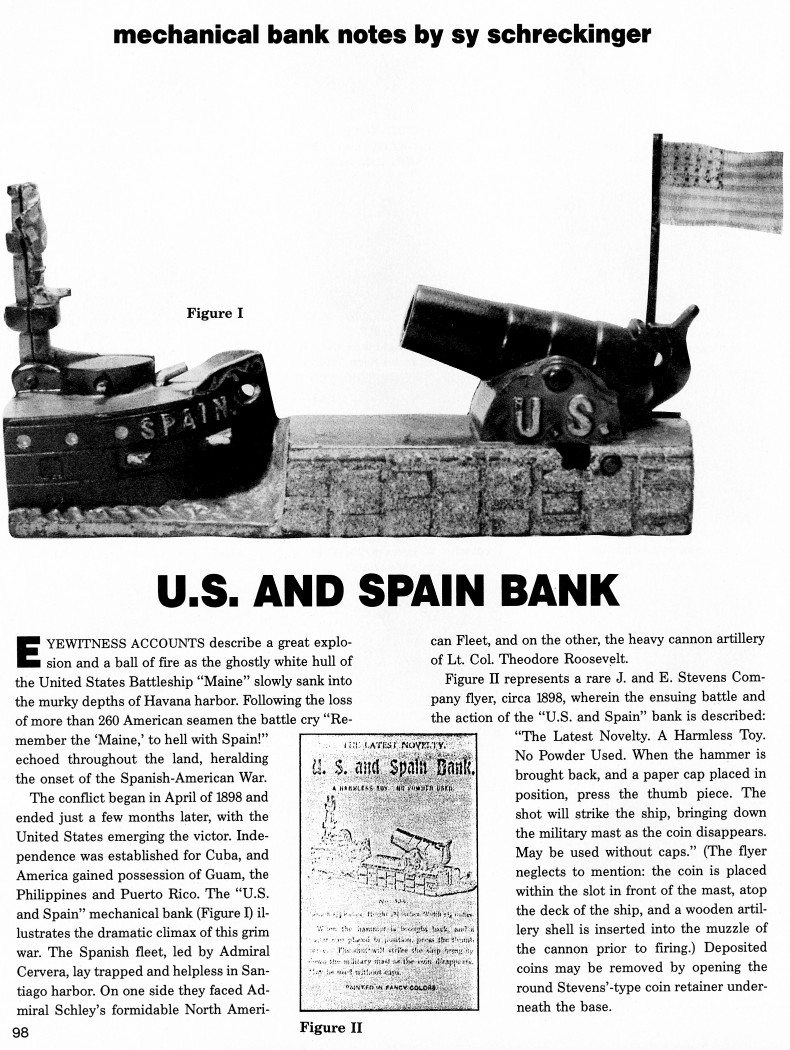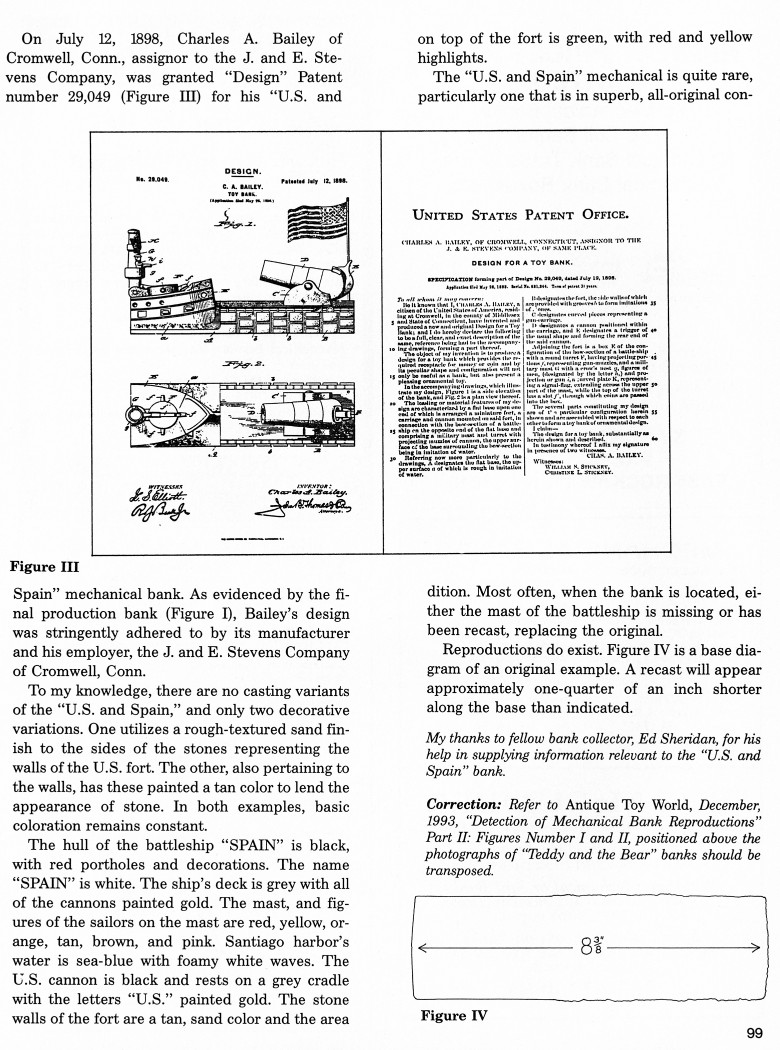|
U.S. and Spain Bank
by Sy Schreckinger – ANTIQUE TOY WORLD Magazine – February,
1994
Eyewitness accounts describe a great explosion
and a ball of fire as the ghostly white hull of the United States
Battleship "Maine" slowly sank into the murky depths of Havana harbor.
Following the loss of more than 260 American seamen the battle cry
"Remember the 'Maine,' to hell with Spain!" echoed throughout the land,
heralding the onset of the Spanish-American War.
The conflict began in April of 1898 and ended just a few months
later, with the United States emerging the victor. Independence was
established for Cuba, and America gained possession of Guam, the
Philippines and Puerto Rico. The "U.S. and Spain" mechanical bank (Figure
I) illustrates the dramatic climax of this grim war. The Spanish fleet,
led by Admiral Cervera, lay trapped and helpless in Santiago harbor. On
one side they faced Admiral Schley's formidable North American Fleet, and
on the other, the heavy cannon artillery of Lt. Col. Theodore Roosevelt.
Figure II represents a rare J. and E. Stevens Company flyer, circa
1898, wherein the ensuing battle and the action of the "U.S. and Spain"
bank is described: "The Latest Novelty. A Harmless Toy. No Powder Used.
When the hammer is brought back, and a paper cap placed in position, press
the thumb piece. The shot will strike the ship, bringing down the military
mast as the coin disappears. May be used without caps." (The flyer
neglects to mention: the coin is placed within the slot in front of the
mast, atop the deck of the ship, and a wooden artillery shell is inserted
into the muzzle of the cannon prior to firing.) Deposited coins may be
removed by opening the round Stevens'-type coin retainer underneath the
base.
On July 12, 1898, Charles A. Bailey of Cromwell, Conn. assignor to
the J. and E. Stevens Company, was granted "Design" Patent number
29,049
(Figure III) for his "U.S. and Spain" mechanical bank. As evidenced by the
final production bank (Figure I), Bailey's design was stringently adhered
to by its manufacturer and his employer, the J. and E. Stevens Company of
Cromwell, Conn.
To my knowledge, there are no casting variants of the "U.S. and
Spain," and only two decorative variations. One utilizes a rough-textured
sand finish to the sides of the stones representing the walls of the U.S.
fort. The other, also pertaining to the walls, has these painted a tan
color to lend the appearance of stone. In both examples, basic coloration
remains constant.
The hull of the battleship "SPAIN" is black, with red portholes and
decorations. The name "SPAIN" is white. The ship's deck is grey with all
of the cannons painted gold. The mast, and figures of the sailors on the
mast are red, yellow, orange, tan, brown, and pink. Santiago harbor's
water is sea-blue with foamy white waves. The U.S. cannon is black and
rests on a grey cradle with the letters "U.S." painted gold. The stone
walls of the fort are a tan, sand color and the area on top of the fort is
green, with red and yellow highlights.
The "U.S. and Spain" mechanical is quite rare, particularly one that
is superb, all original condition. Most often, when the bank is located,
either the mast of the battleship is missing or has been recast, replacing
the original.
Reproductions do exist. Figure IV is a base diagram of an original
example. A recast will appear approximately one-quarter of an inch shorter
along the base than indicated.
My thanks to fellow bank collector, Ed Sheridan, for his help in
supplying information relevant to the "U.S. and Spain" bank.
Correction: Refer to Antique Toy World,
December, 1993, "Detection of
Mechanical Bank Reproductions" Part II: Figures Number I and II,
positioned above the photographs of "Teddy and the Bear" banks should be
transposed.
|


